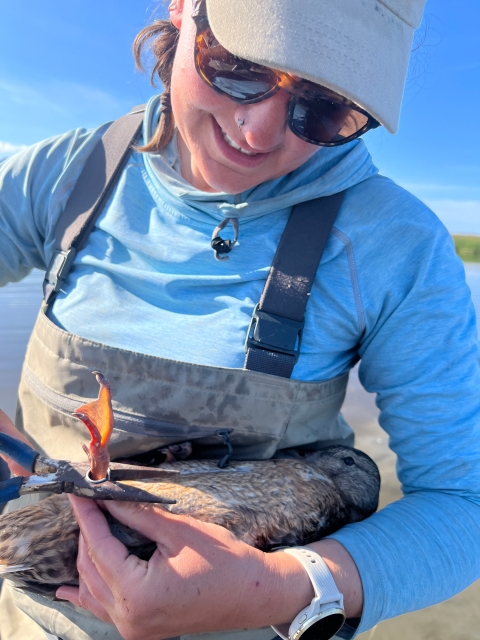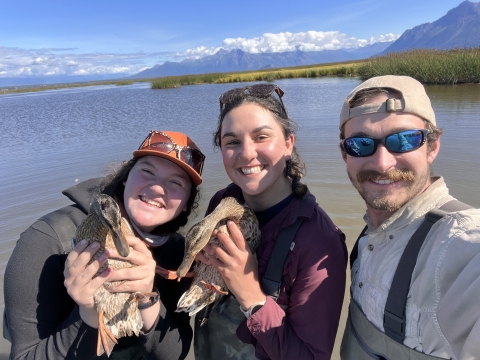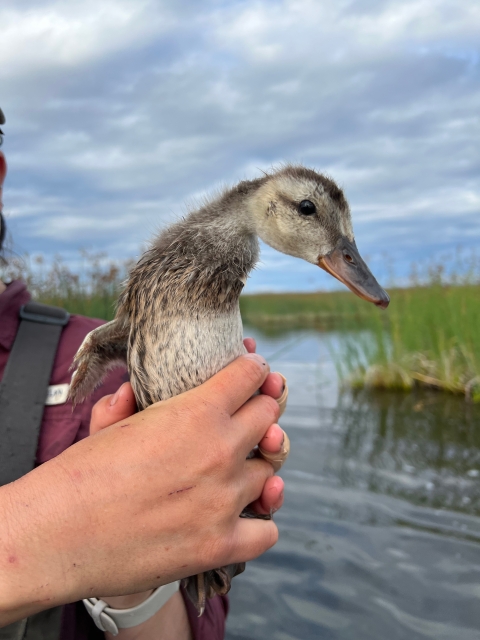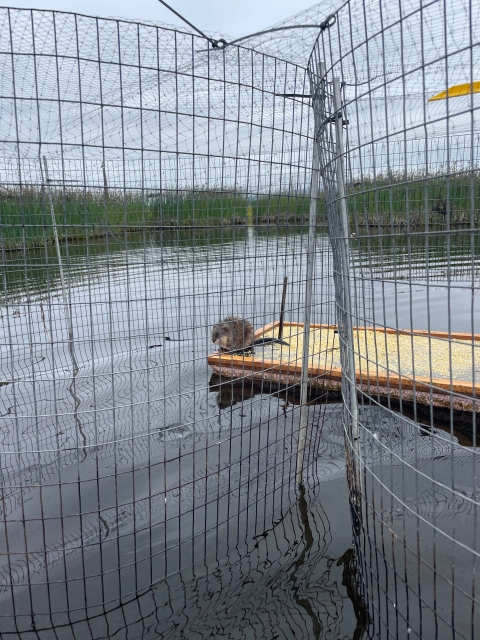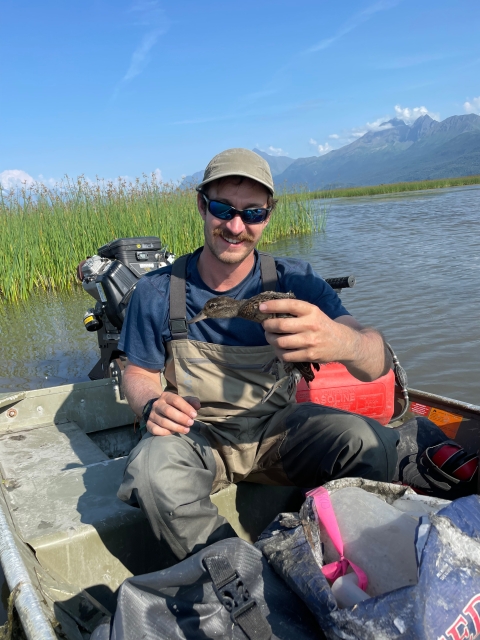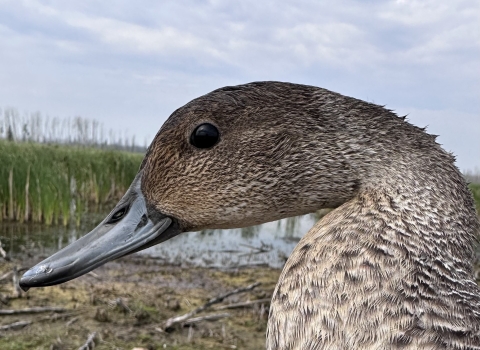By the time August rolls around in southcentral Alaska, the nights are almost completely dark and the mornings have a noticeable chill in the air. Fall is on its way, and with that comes migration. Camping out for 18 days near our banding station, my crewmate and I became privy to the changing conditions. We quickly realized that a cool, cloudy, and rainy day meant we were bound for a good duck day.
Evan Buck and I ran the waterfowl banding station for the majority of the season. USFWS biologists Wade Schock and Dave Safine, and fellow technician Kela Vicich joined us for several days at a time. None of us, with the exception of Dave, had banded in this area before, so we were all excited to explore these new wetlands.
Heavy winter snowfall and a rainy summer made for an interesting banding season. These conditions delayed breeding for many waterfowl, resulting in many more local birds - birds that hatched in the area this year - caught in the traps. At the beginning of the season, many of these birds were too small to band. However, they grew quickly and within a couple of weeks we were able to band the majority of local birds that came through our traps. By the end of the season, local birds made up almost 20 percent of the ducks we banded. Last year, locals accounted for just over one percent of total ducks. It was so cool to observe firsthand the effects of weather patterns on breeding ecology!
Across 12 swim-in traps, we banded a total of 672 ducks. While mallards were our focal species and made up the majority of banded ducks, we also had the opportunity to band northern pintails, greater scaup, redheads, American wigeons, green-winged teals, and canvasbacks. In total, we banded 81 individuals of other species. However, ducks were not the only wildlife we caught in our baited traps. The local muskrats seemed to enjoy the corn as well!
Overall, it was a fun and successful season! Thank you to Dave and Wade for your support and expertise, thanks to Evan for being the best banding partner and tolerating my humor, and thanks to Kela for providing us with fresh energy and lots of duck photos!
Disclaimer: All banding, marking, and sampling is being conducted under a federally authorized Bird Banding Permit issued by the U.S. Geological Survey’s Bird Banding Lab and the Bird Banding Office in Canada.

